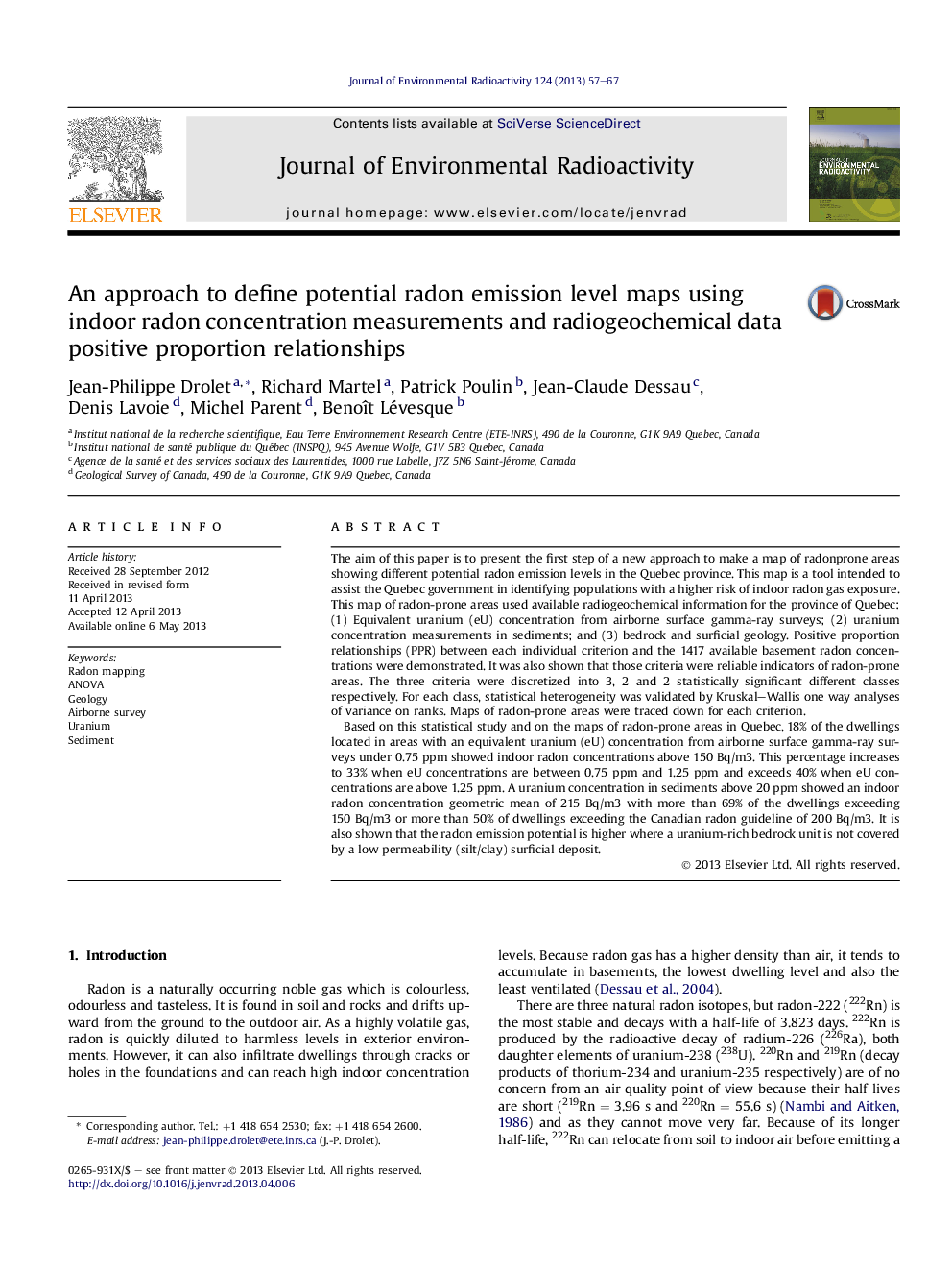| کد مقاله | کد نشریه | سال انتشار | مقاله انگلیسی | نسخه تمام متن |
|---|---|---|---|---|
| 1738175 | 1521609 | 2013 | 11 صفحه PDF | دانلود رایگان |

• 5 criteria were identified in international studies to map radon-prone areas.
• PPR between each criterion and indoor radon concentrations was validated.
• For each criterion, statistically similar classes were merged.
• Each discretized criterion was mapped into two or three heterogeneous classes.
• Merged classes were related to different potential radon emission levels.
The aim of this paper is to present the first step of a new approach to make a map of radonprone areas showing different potential radon emission levels in the Quebec province. This map is a tool intended to assist the Quebec government in identifying populations with a higher risk of indoor radon gas exposure. This map of radon-prone areas used available radiogeochemical information for the province of Quebec: (1) Equivalent uranium (eU) concentration from airborne surface gamma-ray surveys; (2) uranium concentration measurements in sediments; and (3) bedrock and surficial geology. Positive proportion relationships (PPR) between each individual criterion and the 1417 available basement radon concentrations were demonstrated. It was also shown that those criteria were reliable indicators of radon-prone areas. The three criteria were discretized into 3, 2 and 2 statistically significant different classes respectively. For each class, statistical heterogeneity was validated by Kruskal–Wallis one way analyses of variance on ranks. Maps of radon-prone areas were traced down for each criterion.Based on this statistical study and on the maps of radon-prone areas in Quebec, 18% of the dwellings located in areas with an equivalent uranium (eU) concentration from airborne surface gamma-ray surveys under 0.75 ppm showed indoor radon concentrations above 150 Bq/m3. This percentage increases to 33% when eU concentrations are between 0.75 ppm and 1.25 ppm and exceeds 40% when eU concentrations are above 1.25 ppm. A uranium concentration in sediments above 20 ppm showed an indoor radon concentration geometric mean of 215 Bq/m3 with more than 69% of the dwellings exceeding 150 Bq/m3 or more than 50% of dwellings exceeding the Canadian radon guideline of 200 Bq/m3. It is also shown that the radon emission potential is higher where a uranium-rich bedrock unit is not covered by a low permeability (silt/clay) surficial deposit.
Journal: Journal of Environmental Radioactivity - Volume 124, October 2013, Pages 57–67